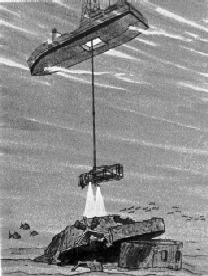
April 8, 2012

On Saturday, April 7, 2012, the International Cryptozoology Museum had a surprise celebrity visitor: Marty Klein, the inventor of the side scan sonar used during the Loch Ness expeditions of the 1970s, and which later became important in finding the Titanic and other shipwrecks.
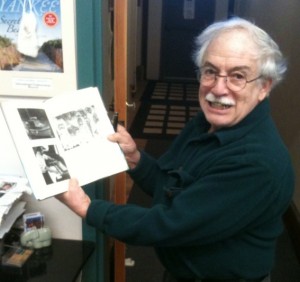
Marty Klein, 2012, at the ICM, pointing out his Loch Ness work in Dennis L. Meredith’s 1977 book, Search at Loch Ness: The Expedition of The New York Times and the Academy of Applied Science. Photo by Loren Coleman.
The well-known MIT electrical engineer Professor Harold E. (Doc) Edgerton (1903-1990) first collaborated with WHOI in underwater photography in the late 1930s. Doc began to experiment with sonar in 1953 while assisting Jacques Cousteau in taking the first deep ocean pictures in the Mediterranean. In order to focus the camera accurately, they needed to know the exact distance between camera and sea bottom. This was accomplished with precision-timed sonar sources called “pingers”. Doc observed from the camera sonar signal that sound echoes could record layers of sediment just below the bottom and stated, “They showed me more than I needed to see.” This started Doc on developing his “mud penetrator,” a high-resolution acoutic sub-bottom profiler.
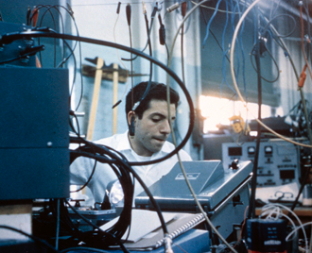
Martin Klein at work refining sonar signals in Doc Edgerton’s MIT lab in 1961. Courtesy Martin Klein.
In 1961, Martin Klein approached Doc about finding an interesting topic for his senior thesis in electrical engineering. Doc proposed that Klein improve the signal processing of his mud penetrator. After much hard work, Klein improved the signal, had his thesis topic and an ongoing connection to Doc. Following graduation, Klein worked briefly in Doc’s MIT lab and assisted with experiments in using the mud penetrator in a horizontal direction to detect bottom topography.
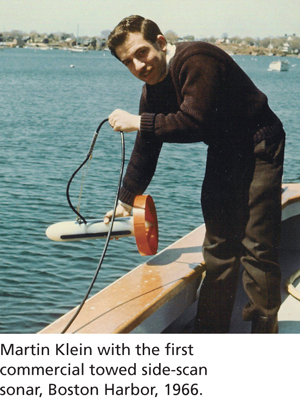
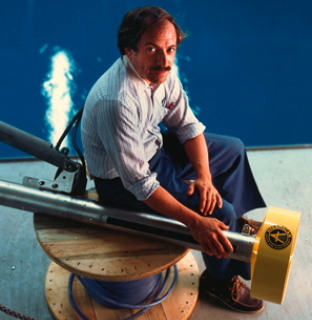
Martin Klein (MIT Class of 1962), founder of Klein Associates, Inc., Salem, New Hampshire in 1967. Photo by John Goodman, courtesy Martin Klein.
Marty Klein is the man behind several side-sonar experiences at Loch Ness, which concurrently were occurring during periods when photographs, now famous and debated, became famous.
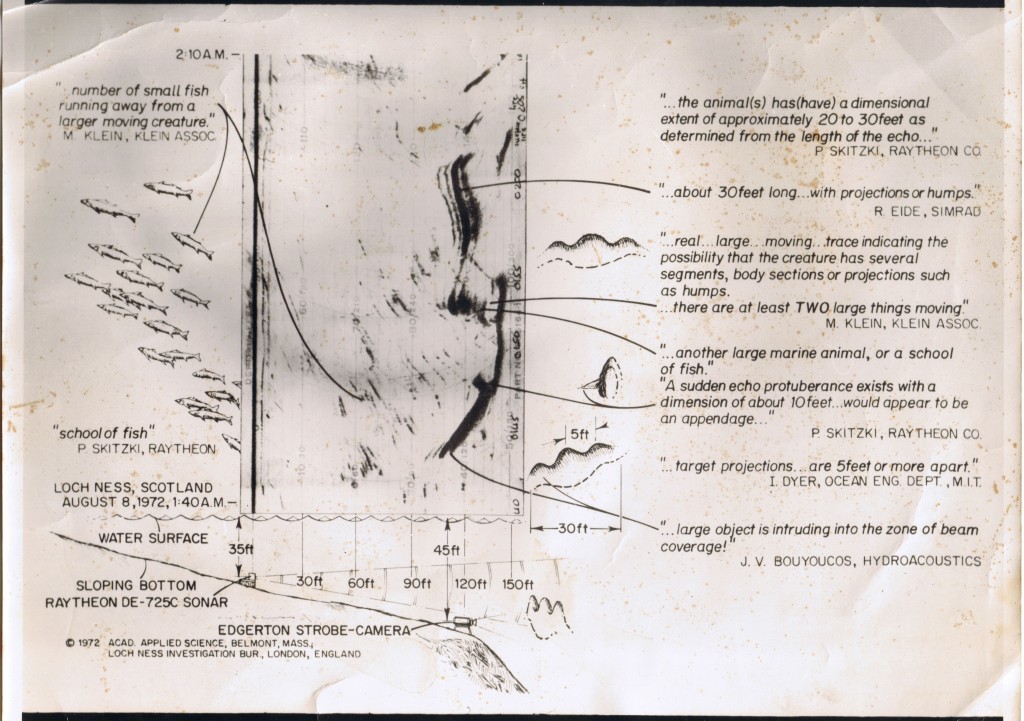 Edgerton AAS 1972 document (Thanks to Dick Raynor).
Edgerton AAS 1972 document (Thanks to Dick Raynor).
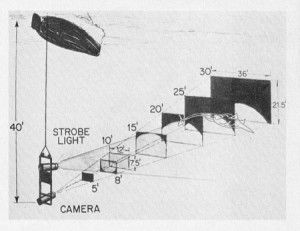
On August 8, 1972, underwater footage was taken in Urquhart Bay near Temple Pier by the team headed by Robert H. Rines from the Academy of Applied Science of Belmont, Massachusetts. The film, taken from an underwater camera suspended from Rines’s boat Nan, corresponded to a Raytheon sonar tracking deployed on another boat, the Narwhal, of a large object that seemed to be chasing fishes. Two frames show a roughly triangular (rhomboid) flipper or fin against a rough body, while a third shows two blobs. The flipper images became clearly visible only after digital enhancement, resulting in criticisms that the photos were retouched, which was not technically what occurred.
On June 20, 1975, Robert Rines obtained two more subsurface photographs southeast of Temple Pier, one showing a “gargoyle” head with apparent horns, and the other the head, neck, and body of a allegedly plesiosaur-like animal. Many experts dispute that the photos show Nessie. G. E. Harwood concluded in 1977 that both images show debris and silt on the loch bottom. Adrian Shine thought the full-body shot might actually show shifting silt patterns, and the gargoyle head could be a tree stump that scuba diver Dick Raynor photographed and dredged up in October 1987 during Operation Deepscan.
The 1975 underwater photo by Rines, while Klein was on the sonar, appears to show the body, flipper, neck, and head of a large animal in Loch Ness. That impressive underwater picture of a large unknown creature in Loch Ness made the front page of the New York Times (April 8, 1976); the photograph was captured in 1975 with an underwater camera using a sonar echo technique. A scientific report by Martin Klein and Harold E. Edgerton appeared in Technology Review (March-April 1976).
(The photographs resulted in the bestowing of the formal Latin name Nessiteras rhombopteryx, given by Sir Peter Scott and Dr. Robert Rines in 1975; it was based on the underwater photographs of 1972 and 1975. The name means “the Ness wonder with the diamond-shaped fin.” Their paper was published in Nature , 258, 1975: 466–468.)
On June 30 and July 1, 1976, Robert Rines, Marty Klein, and Charles Wyckoff recorded (in various ways) large moving objects on an EG&G Mark 1B side-scan sonar mounted at Temple Pier, on the shores of Loch Ness.
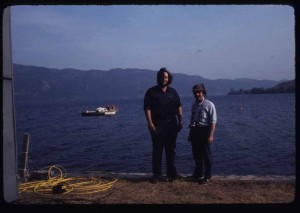
Survey project, Loch Ness (Scotland, UK) – Charles Finkelstein and Martin Klein, 1976. MIT photo by Doc Edgerton.
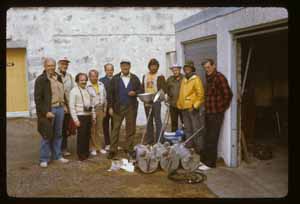
Sonar survey project, Loch Ness (Scotland, UK) – Harold E. Edgerton, Bob Rines, Martin Klein, Thomas Cummings, Garry Kozak, Glen Stors, John Lothrop, Thomas Cummings, Robert Needleman 1978. MIT photo by Doc Edgerton.
The International Cryptozoology Museum was honored by Marty Klein’s tour of our museum, and his sharing of his historical insights with us. We look forward to future visits by Mr. Klein.
About Loren Coleman
Loren Coleman is one of the world’s leading cryptozoologists, some say “the” leading living cryptozoologist. Certainly, he is acknowledged as the current living American researcher and writer who has most popularized cryptozoology in the late 20th and early 21st centuries.
Starting his fieldwork and investigations in 1960, after traveling and trekking extensively in pursuit of cryptozoological mysteries, Coleman began writing to share his experiences in 1969. An honorary member of Ivan T. Sanderson’s Society for the Investigation of the Unexplained in the 1970s, Coleman has been bestowed with similar honorary memberships of the North Idaho College Cryptozoology Club in 1983, and in subsequent years, that of the British Columbia Scientific Cryptozoology Club, CryptoSafari International, and other international organizations. He was also a Life Member and Benefactor of the International Society of Cryptozoology (now-defunct).
Loren Coleman’s daily blog, as a member of the Cryptomundo Team, served as an ongoing avenue of communication for the ever-growing body of cryptozoo news from 2005 through 2013. He returned as an infrequent contributor beginning Halloween week of 2015.
Coleman is the founder in 2003, and current director of the International Cryptozoology Museum in Portland, Maine.
Filed under Cryptomundo Exclusive, Cryptotourism, CryptoZoo News, Loch Ness Monster, Men in Cryptozoology, Museums